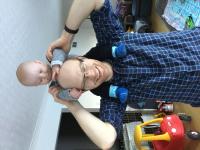Abstract
Postmortem studies reveal that individuals with major
neuropsychiatric disorders such as schizophrenia and autism
spectrum disorder have gray matter microstructural
abnormalities. These include abnormalities in neuropil
organization, expression of proteins supporting neuritic and
synaptic integrity, and myelination. Genetic and postmortem
studies suggest that these changes may be causally linked to the
pathogenesis of these disorders. Advances in diffusion-weighted
magnetic resonance image (dMRI) acquisition techniques and
biophysical modeling allow for the quantification of gray matter
microstructure in vivo. While several biophysical models for
imaging microstructural properties are available, one in
particular, neurite orientation dispersion and density imaging
(NODDI), holds great promise for clinical applications. NODDI
can be applied to both gray and white matter and requires only a
single extra shell beyond a standard dMRI acquisition. Since its
development only a few years ago, the NODDI algorithm has been
used to characterize gray matter microstructure in
schizophrenia, Alzheimer's disease, healthy aging, and
development. These investigations have shown that
microstructural findings in vivo, using NODDI, align with
postmortem findings. Not only do NODDI and other advanced
dMRI-based modeling methods provide a window into the brain
previously only available postmortem, but they may be more
sensitive to certain brain changes than conventional magnetic
resonance imaging approaches. This opens up exciting new
possibilities for clinicians to more rapidly detect disease
signatures and allows earlier intervention in the course of the
disease. Given that neurites and gray matter microstructure have
the capacity to rapidly remodel, these novel dMRI-based methods
represent an opportunity to noninvasively monitor neuroplastic
changes posttherapy within much shorter time scales.
